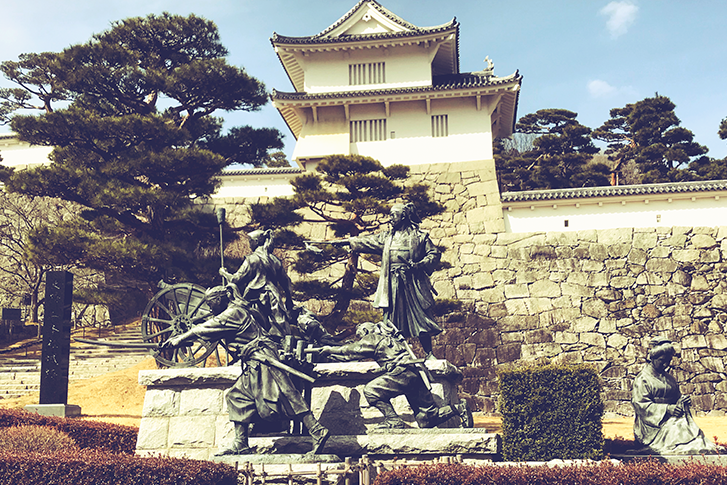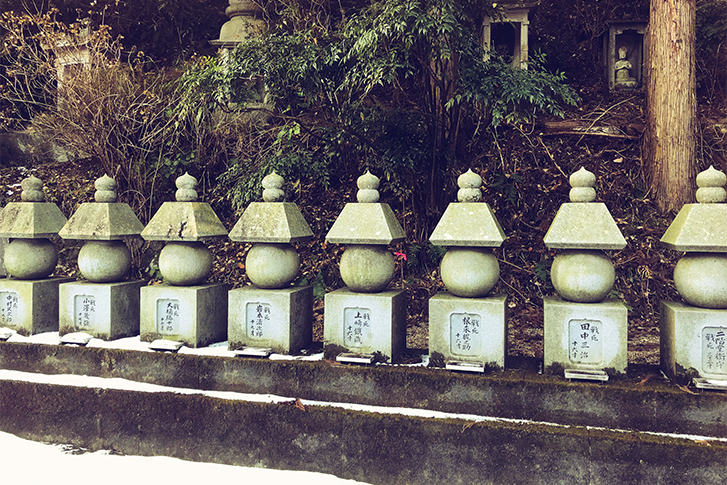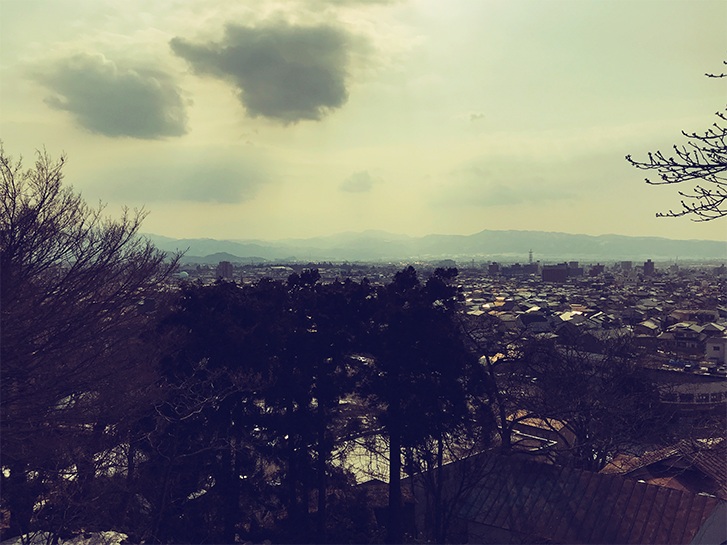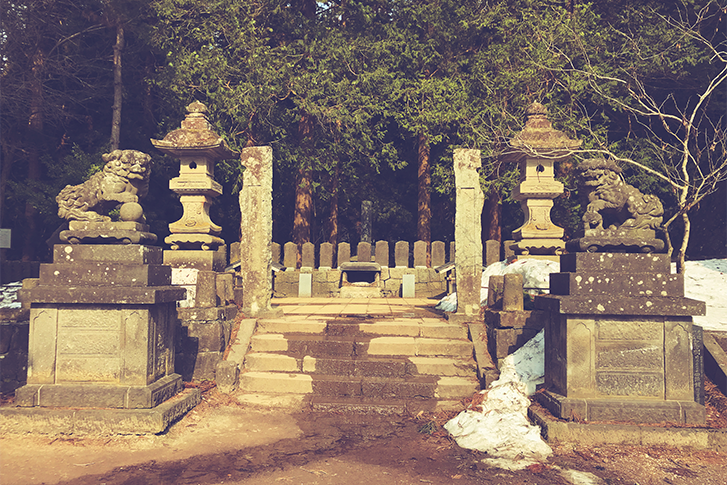Finding Fukushima
There is a book called The Three Cries of Aizu. The first time a visitor to Aizu weeps is in anguish when he or she has to travel there. The second time is upon realizing how kind and considerate the people are. The third time a visitor sheds tears is when it is time to leave. Aizu is one of the main cities in Fukushima, the southernmost prefecture of the Tohoku region in Japan which contains three major mountain ranges. The summers are typically hot, and the winters are cold with heavy snowfall. The first cry is simply an indication of the arduous journey needed to reach Aizu, at least in the old days. Now, it is a simple two-hour journey through the stunning countryside by bullet train. Thus, the first cry must now be of delight with the wonders of Fukushima so easy to access.
Having said that, I am embarrassed to admit that Fukushima is a region I had never ventured to before. Having lived in Kyoto for almost three decades, the terminus for most of my travels north is the big smoke, Tokyo. As an ardent researcher of samurai culture, however, I knew it was high time that this state of affairs be remedied. How can someone who claims to be an expert in the study of bushido not experience first-hand the stoic, selfless samurai spirit that characterizes Fukushima?
Indeed, it was the samurai of the region who left an indelible mark on its history, but as with all other domains in feudal Japan, warriors made up a mere 7% of the population. By far the predominant group in feudal society were the farmers, and agriculture remains the chief occupation in Fukushima with over half of the land assigned to rice production. Fukushima farmers are also known for their magnificent crops of tomatoes, peaches, apples, and pears. Tourism is another important industry with remarkably beautiful destinations such as the Bandai-Asahi National Park, imposing castles, not to mention the myriad hot-spring resorts such as Iizaka, Tsuchiyu, Dake, and Kasshi.
The total area of Fukushima is 13,782 sq km (5,321 sq mi) making it the third largest prefecture in Japan. With a population of around 2-million people, Fukushima prefecture is spacious enough to easily escape the typically fast tempo lifestyle in Japan and find solitude in nature, or peaceful downtime in the quaint country villages nestled in the hills. Or, if you prefer the bustle of larger towns, Fukushima city and other major centres such as Aizu-Wakamatsu, Nihonmatsu, Iwaki, Koriyama, and Sukagawa are vibrant places to visit. My first foray into Fukushima, and may there be many more, took me to Nihonmatsu and Aizu-Wakamatsu. There are few better places in Japan to come face to face with the vestiges of samurai culture.
The Shonetai of Nihonmatsu
Nihonmatsu was the “castle town” of the Nihonmatsu domain governed by the Niwa clan with their easily identifiable ‘X’ family crest during the Edo period (1603–1868). The castle that remains today, Kasumiga-jo, actually encompasses the remnants of two fortresses from different periods of time. Found at the top of the hill are the traces of the first one built by the Hatakeyama warlords sometime during the turbulent Muromachi period (1333–1573). It was destroyed by the almighty Date clan after nearly a century-and-a-half of civil chaos known as the Warring States period (1467–1603), just as Japan was on the verge of being unified by the three great unifiers Oda Nobunaga, Toyotomi Hideoyoshi, and Tokugawa Ieyasu.
At the foot of the same hill are the remnants of the second castle, rebuilt and controlled by various families aligned with the Date clan such as the Gamo and the Kato. The Niwa clan took over the mantle of power from 1643 and ruled the region until the Meiji Restoration of 1868. It just so happens that this year (2018) is the 150th anniversary of the Meiji Restoration which saw the warrior government known as the shogunate replaced with a modern imperial government. Fukushima people prefer to call the epochal
Reminiscent of what Nitobe Inazo relays in his classic book, Bushido: The Soul of Japan (1900), “As among flowers the cherry is queen, so among men the samurai is lord”, the thousands of Sakura cherry trees that come into full bloom in April engulfing the countryside in a carpet of bright pink provide a poignant backdrop to the scene depicted in bronze before the castle walls. Without knowledge of the fateful events of the Boshin War, it is difficult to know what to make of this intriguing monument. Several boys seem to be playing “war games” just as I did as a child, but their sculptured expressions reveal something infinitely more candid than any countenance I could have struck with my plastic cowboy cap gun. This was the site of the Battle of Nihonmatsu that took place during the 1868 Boshin War, pitting shogunate loyalists against imperial revolutionaries. It was a bloody encounter that heralded epic change in Japan following more than seven centuries of warrior rule.

The twilight years (1820s–) of the Edo period saw growing dissatisfaction with the shogunate’s reaction to possible foreign incursion. This intensified with the arrival of the American Commodore Matthew Perry’s flotilla of “Black Ships” to Japan’s shores in 1853 and his demands that Japan open its ports for trade, or else… Japan’s peaceful inertia deteriorated as samurai from the Satsuma, Choshu and Tosa domains (now Kagoshima, Yamaguchi and Kochi prefectures) rallied support for an anti-shogunate movement. They promoted an imperial-loyalist alternative, and a short but sharp revolution (the Boshin War) ensued.
The samurai of Nihonmatsu and the surrounding regions were fiercely loyal to the shogunate. It was samurai boys aged between 12 and 17 who became the last line of defence for the castle, but it was doomed to fall after a single day of carnage inflicted through the superior firepower of the new Meiji government’s modernized forces. Most of the troupe of 25 boys led by Kimura Jutaro, himself only 22, fought to the death with vigour, valour, and constancy far beyond their tender ages in a way that astounded the seasoned warriors they were up against. Their gallant passing was hardly spoken of in the region for half a century after the Boshin War. It was as if it was too tragic, too cruel for such young lads to be forced into shouldering the burden of their domain’s demise. It was not until the 1920s that their heroism was acknowledged, and they were dubbed the “Nihonmatsu Boy Corp” (Nihonmatsu Shonentai). This designation now includes a total of 62 Nihonmatsu youths who were in the thick of battle in different Nihonmatsu divisions. Their souls are now enshrined in the Dairinji temple.

The Byakkotai of Aizu
Not far away in the neighbouring Aizu domain, a similarly heartrending episode was unfolding. A few hundred youths aged 16 through to 17 in the Byakkotai (White Tiger Brigade), one of five youth reserve units in Aizu, were mobilized against the imperial forces. They were decimated in the Battle of Tonokuchihara on October 8, 1868. A handful of twenty survivors hiked through the forests, over hills, and through an underground stream flowing beneath a mountain to regroup at Aizu stronghold of Wakamatsu Castle. Emerging from the cool depths of the mountain they clambered up Iimoriyama hill to gain a clearer view of their castle town but were dismayed to see it consumed in smoke. Rather than suffer the humiliation of being vanquished by the enemy, they climbed further up the hill and all committed seppuku, plunging their short swords deep into their bellies as a last act of defiance and demonstration of the samurai virtue of self-sacrifice and honour.

Nineteen of the twenty died at that fateful spot, but Iinuma Sadakichi, against his will, was saved by a passing peasant. Iinuma’s remains were returned to be with his comrades after he died many years later in 1931 following an illustrious career in government and the military. Twenty tombstones now stand beside a monument erected in their memory, and it is a popular symbol of loyalty, resolve, and bravery. “No matter how many people wash the stones with their tears, these names will never vanish from the world.”

One of the main streets in Aizu-Wakamatsu is called Byakko Avenue, and the tragic story is often relayed at important events. But again, my local guides seem to be conflicted as they explained the calamity to me. Is it acceptable in this day and age to venerate “war heroes” who had not yet come of age? Could this not be interpreted as glorifying the tragedy of war rather than acknowledging remarkable courage shown in the face of adversity? Moreover, as the shogunate loyalists were defeated by imperialist revolutionary forces, they were destined to be branded as passé objectors to change as Japan embarked on a topsy-turvy mission to modernize.
There was a faintly apologetic and slightly embarrassed shyness that was at odds with deep-seated pride and sense of justice that has long been a hallmark of Aizu-ites. “Our ancestors were just doing their duty,” I was told, “so why were we made out to be the bad guys?” To me, however, the history I was sensing in the flesh at various sites epitomized the beauty of samurai ideals that warriors dedicated their lives to attaining, but few could genuinely claim to have realized throughout two centuries of peace. To quote Nitobe again, “Of the causes in comparison with which no life was too dear to sacrifice, was the duty of loyalty, which was the keystone making feudal virtues a symmetrical arch.” To abandon a sinking ship like rats would have been in contravention of the very fibre of their spiritual makeup and duty as samurai. “Rectitude is the power of deciding upon a certain course of conduct in accordance with reason, without wavering—to die when it is right to die, to strike when to strike is right.” (Nitobe)







